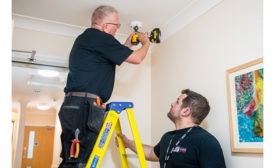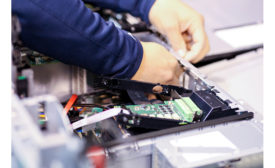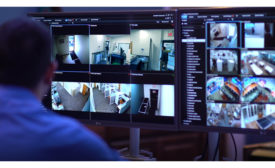Featured on Home Page
VIDEO SOLUTIONS
Successfully offering cloud-based video solutions begins with identifying a need and focusing on the right benefits.
Read More
SDM EXCLUSIVE
State of the Market 2020: Access Control
The access control market in 2019 and 2020 can best be described as strong, but in flux — with changing architectures, changing customer expectations and demands, and changing security integrator roles.
April 3, 2020
VIDEO SOLUTIONS
Sorting Through the Jargon of Video Storage
Understanding the common — and not-so-common — terms and acronyms in the video storage space is the first step to mastering the technology.
March 30, 2020
'Badging In' Goes Digital & Higher Security
Once a fairly ‘vanilla’ choice, access control reader and credential options today include an array of more secure mobile, digital and security options to fit every user’s need and budget.
March 23, 2020
SMART HOME | SMART BUSINESS
Welcome to the Smart Workplace
There are many different components that go into the smart workplace — here’s how security fits in the puzzle.
March 9, 2020
Sneak Peek: Trends & Technologies to Expect at ISC West
Building on 2019’s trends of smarter integrations, machine learning and artificial intelligence, the 2020 show promises huge leaps in cyber security, access control, cloud-based security, and ML & AI.
March 6, 2020
TRENDS & INDUSTRY ISSUES
Winning the Security Talent War
When it comes to addressing the talent crisis in the security industry, the faces of the future will need to be much more diverse than those of the past.
March 2, 2020
Uncommon Ways to Use Video Management Systems
Today’s video management systems are powerful. And when combined with creative thinking on the part of security dealers, they are addressing important business issues for customers.
February 24, 2020
Be in the forefront of security intelligence when you receive SDM.
Join over 10,000+ professionals when you subscribe today.
SIGN UP TODAY!Copyright ©2025. All Rights Reserved BNP Media.
Design, CMS, Hosting & Web Development :: ePublishing












